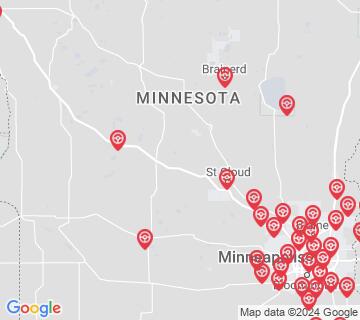FREE Minnesota DMV Practice Test #20
The Minnesota DMV practise examinations have been updated for January 2026. It includes questions based on the Minnesota Driver Handbook's most essential traffic signals and laws for 2026. Use actual questions that are very similar (often identical!) to the DMV driving permit test and driver's licence exam to study for the DMV driving permit test and driver's licence exam.
On the practise exam, each question gets a tip and explanation to help you remember the concepts. The written component of the official Minnesota DMV test will include questions about traffic rules, traffic signs, and driving statutes, as well as knowledge from the Driver Handbook.
To obtain a passing grade, you must correctly answer 32 of the 40 questions. To help you prepare for your instruction permit or driver's licence, take our Minnesota DMV practise test.
The DMV exam is available in several languages.
Using any kind of testing assistance will result in an automatic fail, and the DMV may take additional action against your driver's licence, so stay away from it.
1 . You may cross double solid yellow lines:
Double solid lines indicate that you may not pass or change lanes. You cannot cross the lines unless it is to turn left to enter or exit a highway, to turn into or from a driveway, or to make a U-turn (where permitted).
2 . A steady green light at an intersection means that you:
A steady green light means you may drive through the intersection if the road is clear. You may also turn right or left on a steady green light unless a sign prohibits the turn. When turning, you must yield to other vehicles and pedestrians within the intersection.
3 . A vehicle displaying a slow-moving vehicle emblem cannot drive faster than:
An orange and red triangular sign indicates a slow-moving vehicle. A vehicle displaying one of these signs cannot be driven faster than 30 mph.
4 . An arrow painted on the pavement means:
An arrow painted on the pavement within a traffic lane indicates that drivers in the lane must make the movement indicated by the arrow. Drivers should follow directions given by any traffic signs or signals before proceeding in the direction indicated by the arrow.
5 . Drivers who have consumed alcohol before getting behind the wheel:
Alcohol is a depressant that negatively affects judgment, vision, concentration, understanding of reality, and reaction time. It is never safe to consume alcohol in any amount before getting behind the wheel of a car.
6 . While driving on a two-lane road without bicycle lanes, you encounter a bicyclist traveling in the same direction. What is the safest way to pass the bicyclist?
You should pass a bicyclist the same way you would pass any other vehicle, but not so fast or close to them that you throw debris in their face or blow them around with the draft of air from your vehicle. Allow at least 3 feet of space between your side mirror and the bicyclist, or at least 5 feet on higher speed roads or when there is a group of bicyclists. Honking unnecessarily may startle riders and make them more likely to crash.
7 . Because driving involves some risk, it is wise to continually improve your driving and observation skills.
Driving can become unsafe if drivers believe they have nothing to improve. For your safety and the safety of others, always strive to improve your driving and observation skills.
8 . From top to bottom, the following is the proper order for traffic lights:





